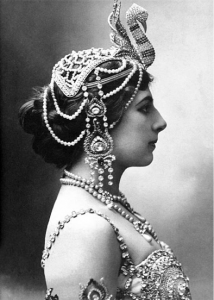The month of October 1917 was an interesting one for Jack. He and the 8th Queen’s were carrying out improvements of the trenches when it began, but, on October 4, 1917, Jack left the battalion to return to England for an officer’s training course at the military base in Aldershot. Stay tuned for a post on this in the coming weeks. We cover Jack’s movements closely here on our site, and when he is out of the trenches for the duration of a couple of months, it can be easy to forget that the war doesn’t stop when his letters slow down. Indeed, some of the most pivotal events of the war occurred in October 1917.
Let’s begin with the Western Front.
 Canadian infantry at the Second Battle of Passchendaele.
Canadian infantry at the Second Battle of Passchendaele.
Photo via Wikimedia Commons.
In Flanders, the Battle of Third Ypres was raging on when October began. The Battle of Polygon Wood ended on October 3 only to give way to a British attack to take Gheluvelt Plateau on October 4. The British accomplished their objectives by establishing control of Broodseinde Ridge. Rain began to drench the battlefields soon after this first offensive ended, creating muddy conditions for the soldiers and adding another challenge to future fighting. On October 9, the British began their first attempt to take Passchendaele at the Battle of Poelcapelle. It ended in failure. Three days later, on October 12, the First Battle of Passchendaele began – a second, larger try at the objective the British had hoped to achieve at Poelcapelle – but it was eventually stopped because of the terrible weather. The British tried again to take their objectives at the Second Battle of Passchendaele, which began on October 26 and did not end until November 10. What happened at Passchendaele eventually became the stuff of legend.
Cataclysmic events were occurring off of the battlefield as well. On October 15, Mata Hari, an exotic dancer of Dutch origin, was shot after being convicted of espionage. She had moved to Paris in 1903, becoming one of the most famous performers of the period. She had sexual relationships with many members of the European elite and eventually became tangled up in WWI after beginning a relationship with an officer in the Russian Expeditionary Force. The French recognized that her international reputation could make her the perfect spy, and Mata Hari accepted their proposal. In the course of events, however, the French began to suspect that Hari was actually helping the Germans and eventually executed her. The facts of her trial are clouded in shades of gray. Some believe, in fact, that she was the victim of a set-up, convicted and used as a scapegoat.
 Mata Hari c. 1910.
Mata Hari c. 1910.
Photo via Wikimedia Commons.
The story of Russia in October 1917 is, perhaps, the most important of the three things we’re highlighting today. Vladimir Lenin had been forced to live in exile in Finland since July, having called for the Provisional Government to give way to Soviet rule. Unrest continued after he left, and in October 1917, the proper environment was in place for a Bolshevik coup d’état and Lenin returned to Petrograd. Under his leadership, the coup eventually took place in November 1917. While Jack was back in England, Lenin was returning to Petrograd to set in motion the events that were to finally establish the Soviet Union and change the course of twentieth century history irrevocably.
For further reading:
http://www.greatwar.co.uk/timeline/ww1-events-1917.htm#october
